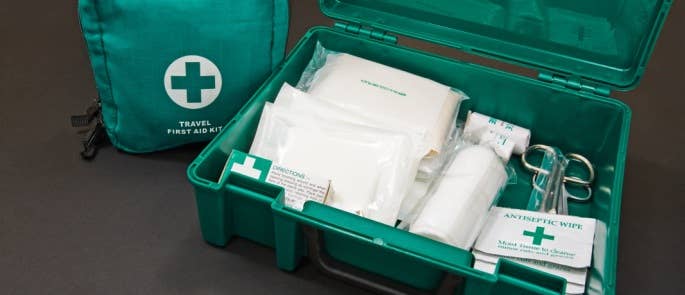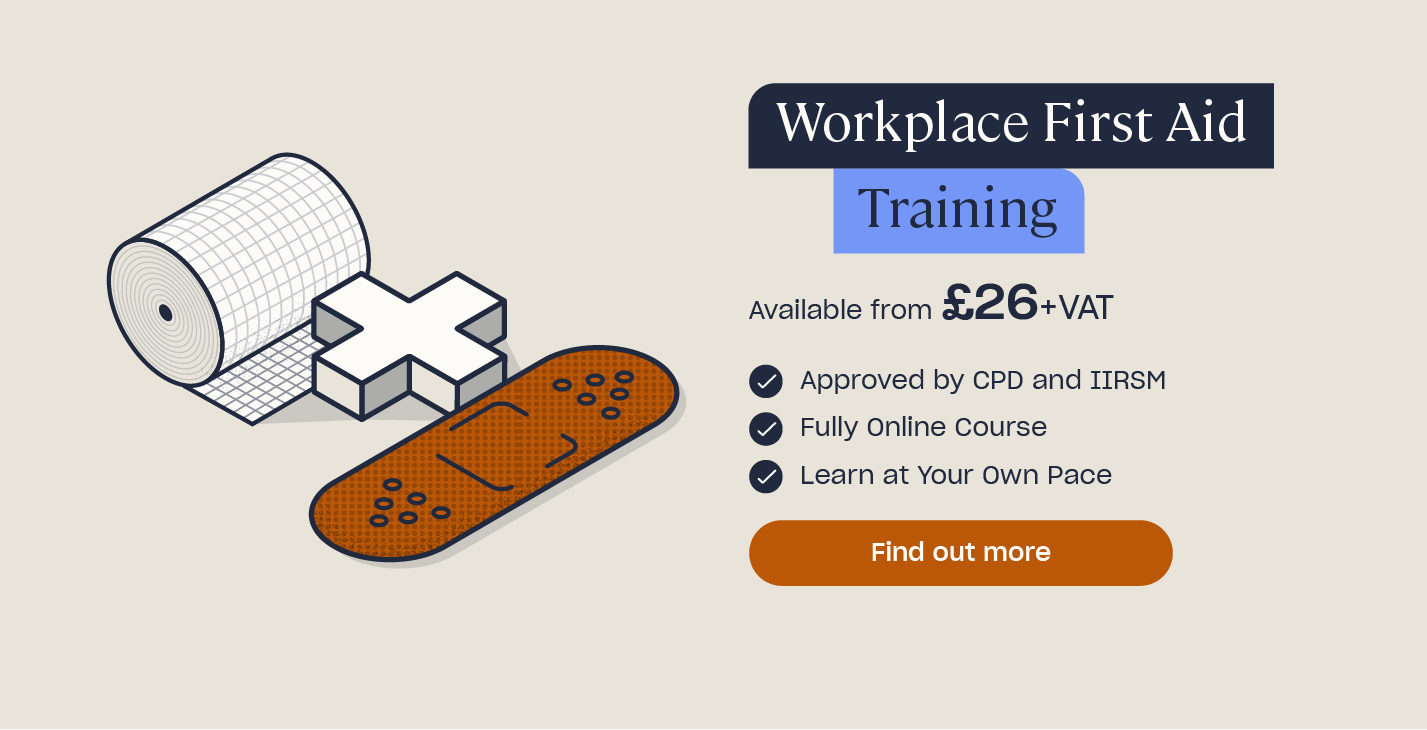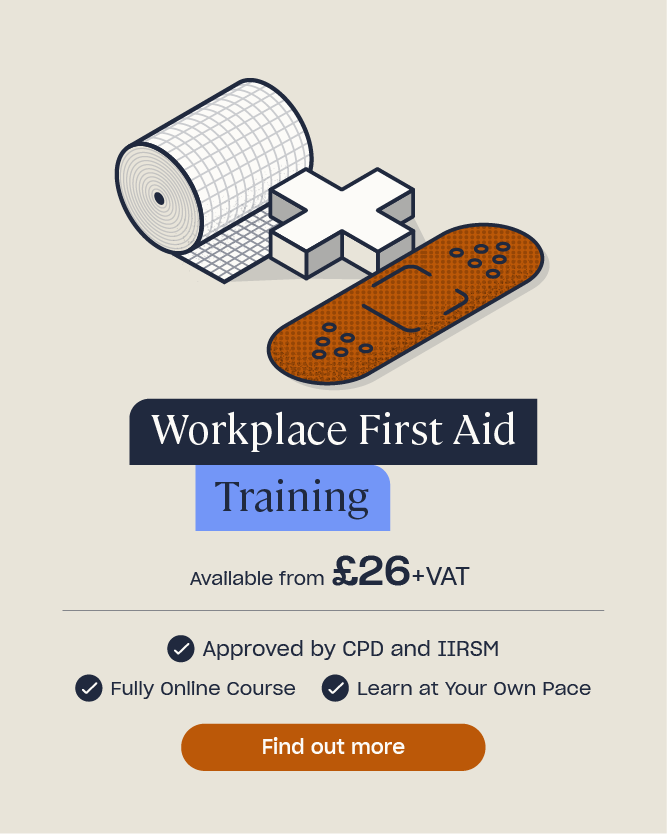How to Conduct a First Aid Needs Assessment: Free Template
Having an understanding of first aid, regardless of employment, role or circumstances, can have many benefits. We never know when illness or injury can occur, and it is important to be able to recognise the hazards and level of risk around you, so that you can respond appropriately. Employers have certain responsibilities when it comes to ensuring appropriate provisions are in place regarding first aid, so that all employees can receive immediate help should an issue occur.
This article will outline what a first aid needs assessment entails, what it means to be a low-risk workplace or a higher-risk workplace, and the importance for both environments to complete a first aid needs assessment. We will also provide a downloadable assessment template for use within any business.
What is a First Aid Needs Assessment?
A first aid needs assessment is an assessment carried out by an appropriately trained and competent individual. It is used to determine how many first aiders are required, what level of qualification they should hold, and whether any additional facilities or equipment needs to be provided. The Health and Safety (First Aid) Regulations 1981 is a key piece of legislation regarding first aid. It outlines the responsibility placed on employers to ensure that any necessary facilities, equipment and personnel are ‘adequate and appropriate’.
Determining what is classed as ‘adequate and appropriate’ will depend on the nature of the workplace itself. There are several factors to consider, which we will discuss in greater detail later in the article. Regardless of industry or how many people are employed by the business, health and safety regulations in respect to first aid assessments and provisions are always applicable.
Depending on the size of the organisation, there may be a record kept of work-related injuries. This, along with an incident book and the company’s risk assessments, can help to create a more informed picture of which incidents are most likely to occur and what kind of first aid provisions are required to deal with them. By law, organisations that employ ten or more members of staff must have an accident book.
Control measures should always be in place to reduce any potential risks and prevent accidents and injuries at work, but should these fail, first aid assistance may be necessary. Of course, along with work-related accidents, there is always the risk of unexpected medical episodes occurring at any time.

When it comes to what first aid assistance entails, it is worth noting that it could be anything from life saving CPR to dealing with a minor cut. The Health and Safety Executive (HSE), states that under the Health and Safety (First-Aid) Regulations 1981, ‘first aid’ refers to:
- Treatment for the purpose of preserving life and minimising the consequences of injury and illness until help from a medical practitioner or nurse is obtained, and;
- The treatment of minor injuries which would otherwise receive no treatment, or which do not need treatment by a medical practitioner or nurse.
The purpose of administering first aid to those in need is to preserve life, prevent conditions from getting worse and to promote recovery.
To get an idea of just how common illnesses and injuries in the workplace are, below are the most recent related statistics from the Health and Safety Executive (HSE).
In 2022/23:
- 1.8 million workers suffered from work-related ill health (new or long-standing).
- 561,000 non-fatal injuries occurred at work.
- 32% of non-fatal injuries to employees were a result of slips, trips or falls on the same level.
- 135 workers suffered fatal injuries at work.
- 35.2 million working days were lost due to work-related illnesses and workplace injuries.
Many of the incidents that make up the statistics above will have required first aid and it is worth thinking about how being able to access this immediate assistance may have prevented the number of fatalities from being much greater.
Want to Learn More?
Why not take a look at our Online Health and Safety Courses? Or browse our range of first aid courses, including our Workplace First Aid Training, Emergency First Aid At Work (EFAW) Refresher Course and our Paediatric First Aid Online Training Course.
It is important that a first aid needs assessment not only determines how many first aiders are required, but also what level of qualification they need to have. First aid personnel generally fall into three main categories:
First aider – First aid at work (FAW) qualified
An individual with this certified level of competence (level 3) is a first aider who is able to confidently and appropriately deal with a range of first aid situations, including specific injuries and illnesses that go beyond just emergencies.
Emergency first aider – First aid at work (EFAW) qualified
An emergency first aider is a first aider (level 2) who has been trained in recognising and responding to emergency situations. Those with either FAW or EFAW are qualified in first aid, but the latter of the two is less extensively trained.
Appointed person
An appointed person does not require formal training, but can take on certain duties regarding first aid within the organisation. For example, they may be given the responsibility of:
- Calling the emergency services when required.
- Maintaining first aid facilities and equipment, ensuring first aid kits are well stocked and up to standard at all times.
- Keeping up to date first aid records.

Unless trained and deemed competent, appointed persons do not generally assess or administer first aid directly. Although, if they are appropriately trained and experienced, they may be given the responsibility to provide emergency cover, should the first aider be unavailable.
There are no set rules as to how many first aid personnel are required within an organisation, but it is good practice to ensure organisations that are deemed high-risk environments, or those who have a large workforce, have greater numbers of first aid personnel than those classed as small and/or low-risk.
What is Classed as Low-Risk or High-Risk Work?
When it comes to better understanding risk within an organisation, a risk assessment will help to determine what potential hazards are present and what level of risk is associated with them. Not all workplaces, even with the same number of workers or the same manner of work, will produce identical risk assessments. Each business should carry out one that is unique to them.
We will now take a look at some of the differences between high-risk and low-risk environments when it comes to first aid.
Low-risk workplaces
Low-risk workplaces are unlikely to involve working with many workplace hazards on a regular basis, such as machinery, chemicals or working at height. Examples of potentially low-risk environments include offices, shops, libraries and call centres.
Even in businesses with a low level of risk, the minimum expectation under The Health and Safety (First-Aid) Regulations 1981 is that all workplaces have an adequately stocked first aid kit, an appointed person to take charge of the first aid arrangements and that all necessary first aid related information is provided to employees.
These minimum requirements may be enough for many low-risk organisations, particularly those with a workforce of under 25, as well as those classed as higher-risk where they have less than five employees, although this should never be assumed to be the case based on numbers alone.
Where work activities are deemed lower-risk, the HSE suggests the minimum a first aid kit should be stocked with is:
- A leaflet providing general guidance on first aid.
- 20 individually wrapped sterile plasters of assorted sizes. These should be suitable for the type of work and may need to include hypoallergenic ones.
- 2 individually wrapped sterile triangular bandages.
- 6 medium individually wrapped sterile unmedicated wound dressings.
- 2 large individually wrapped sterile unmedicated wound dressings.
- 2 sterile eye pads.
- 3 pairs of disposable gloves.
- 6 safety pins.

High-risk workplaces
High-risk workplaces are more likely to be those that involve activities, equipment and exposure to various hazards on a regular basis, such as laboratories, farms, factories and construction sites.
When thinking about the types of incidents that could occur when working with chemical hazards, physical hazards and biological hazards, it is essential that a sufficient number of trained first aiders are available to be able to offer immediate assistance when needed. This can also be the case, regardless of risk level, when a business employs more than 25 members of staff.
It could be determined that several qualified first aiders are required and that additional training may be needed to provide first aid assistance for specific circumstances, such as dealing with exposure to a particular type of hazardous substance. As well as additional first aiders, a first aid room may be required and may need to be stocked with more specialised equipment, in addition to the basic first aid kit.
How Do I Complete a First Aid Needs Assessment?
We have now covered what a first aid needs assessment is, why it is important and how staffing numbers and the level of risk associated with workplace activities can impact how many first aid personnel are needed, what qualifications they require and what facilities and kit is appropriate. This is the foundation for understanding the requirements of putting a robust first aid system in place.
As there are no legal or mandatory requirements on what first aid provisions you should have in place, it can be quite frustrating to try and determine how many qualified staff you should have and whether you need to invest in additional kit or training. However, by ensuring a thorough first aid needs assessment is undertaken by a competent and qualified person, who is familiar with the workings of the business and risk management, you should be able to determine what is adequate and appropriate for the circumstances.
Considerations to make when conducting a first aid needs assessment include:
- The nature of the work taking place.
- Workplace hazards and risks – these should be detailed in a risk assessment.
- The size of the workforce.
- The shift patterns being worked.
- Annual leave and other absences of first-aiders and appointed persons.
- Any history of accidents, injuries and illness within the organisation.
- The need to travel for work, remote and lone working.
- Remoteness of work sites and locations and any issues accessing emergency medical care.
- Provisions required for non-employees.

Given that all employees have the right to receive immediate first aid, as and when required, there are some basic considerations each employer should make when completing the assessment; such as:
- How long will it take for help to reach those in need?
- Is there appropriate equipment available?
- Can aid be accessed at all times and in all locations?
- Are those appointed to help appropriately trained and experienced?
It is easy to think of the physical help people require during first aid and which manner of physical harm someone may experience at work. However, it is worth noting that a first aid needs assessment may highlight the need for first aiders specifically trained in mental health. These individuals are trained to recognise the warning signs of mental ill-health and to be able to approach and support someone in need.
A couple of additional considerations to make before you complete the assessment template, are that employers do not have a legal duty to provide first aid to non-employees. However, it is recommended by HSE that you include them when assessing what provisions need to be put in place. Also, whilst you do not need to record the findings of your assessment, it is advisable to do so, as it is a good way to show how and why the decision was made to put the chosen first-aid provisions in place.
Free First Aid Needs Assessment Template
The sections within the template demonstrate the general factors involved in determining what first aid provisions are required. All employers should conduct their own needs assessment and consider the individual workings and circumstances of their own business. Space has been provided on the template to add any specific and additional details that may apply solely to your business.
You may also find it useful to take a look at the The Health and Safety (First-Aid) Regulations 1981 – First-aid needs assessment case studies provided by the HSE, to show how the responses may differ between different types of business and circumstances.
You can download our free assessment template here:
First aid needs assessments are vital in helping to determine the number and type of first aid provisions that a business must have in place to meet standards of The Health and Safety (First-Aid) Regulations 1981. Thus, ensuring each member of staff maintains their right to have access to adequate and appropriate first aid at all times.
Further Resources:
- Workplace First Aid Training Course
- How Many First Aiders Do I Need In My Workplace?
- A Guide to the Most Common Workplace Hazards
- Paediatric First Aid Quiz
- Guidance for First Aid Kits in the Workplace
- First Aid Qualifications: The Difference Between FAW and EFAW
- Workplace First Aid Quiz
- Risk Assessment Quiz
- How to Support Individuals After Giving First Aid Assistance
- What are the Responsibilities of a First Aider?
- The Most Common Office Injuries and How To Prevent Them











